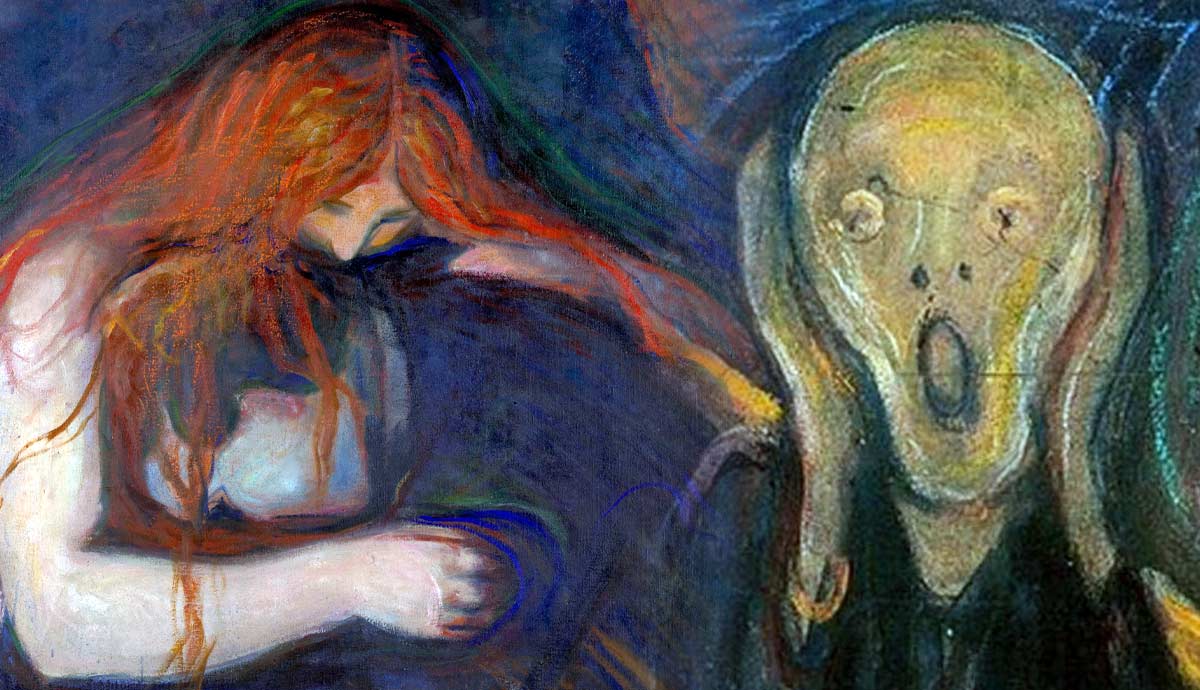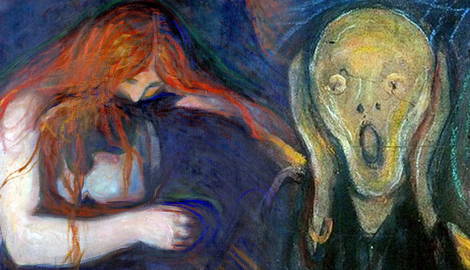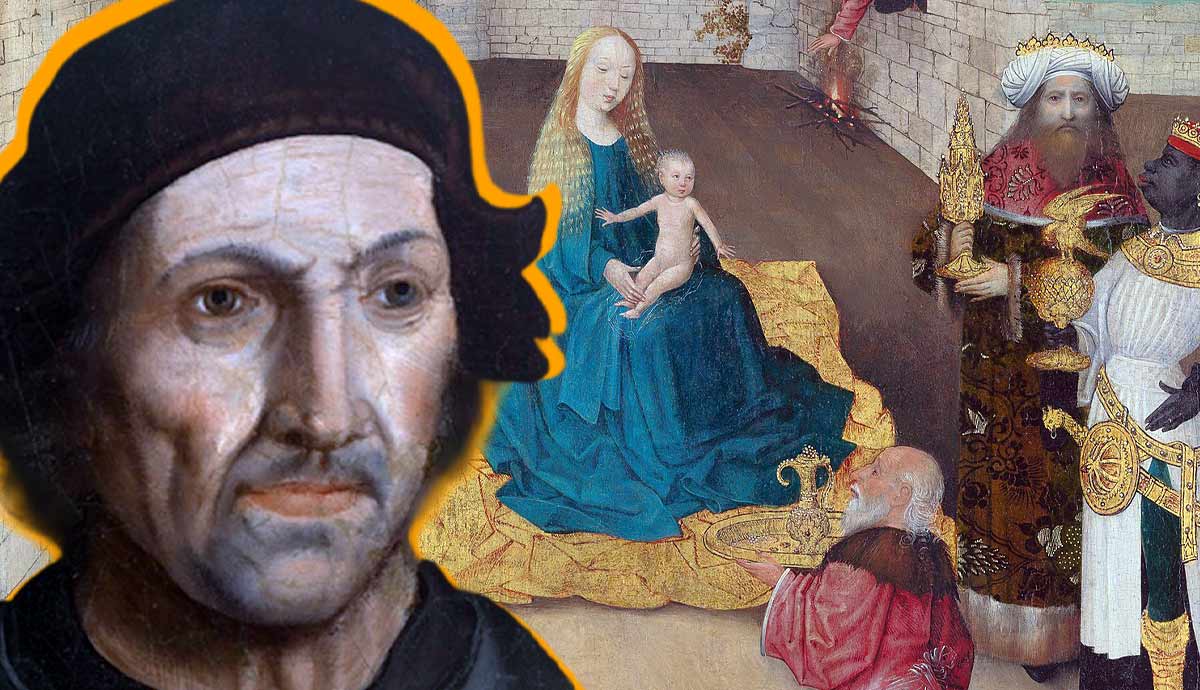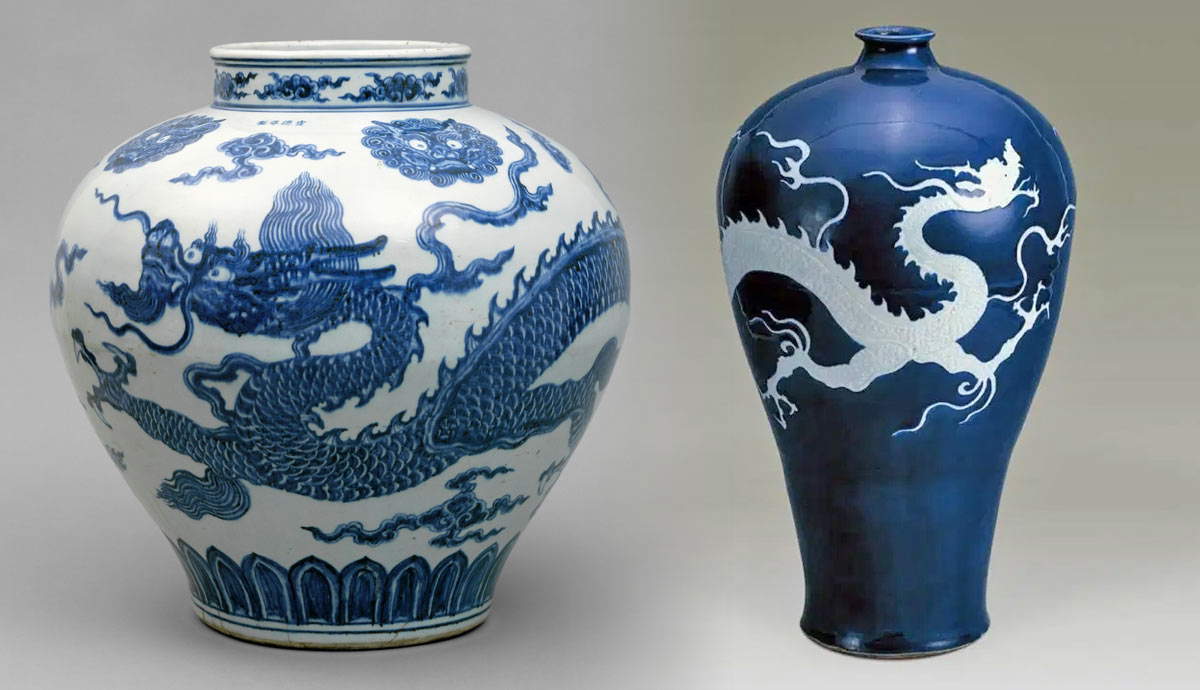
The most famous of all Norwegian painters, Edvard Munch, is well-known for his dark and often disturbing Expressionist works painted in screaming bold colors. He was a nervous man with poor health, prone to sudden disturbances and exaggerated emotional responses. Illness, both mental and physical, was a constant motif in Munch’s art during his entire career. Read on to learn more about Edvard Munch’s famous paintings and the stories behind them.
1. “The Sick Child”: Edvard Munch’s Traumatic Childhood

Edvard Munch was known for relying on the same subject matter in his paintings for years, repainting, altering, and repeating the same scenes. One of his continuous subjects was the sick child—an image of an ailing young girl next to her mother or aunt, bent near the child’s bed in exhaustion and grief. Munch created six versions of the painting, all inspired by the traumatic event of his early childhood. Munch was born so weak that he was baptized at home right after birth, as his parents were not sure he would live for too long. When he was five, his mother died of tuberculosis. His father, devastated by grief, became obsessively religious.
Less than a decade later, his sister Sophie succumbed to the same disease. Sophie became the inspiration for one of Munch’s most famous painting series, The Sick Child. He blamed his father for passing on “the seeds of madness” to his family. Indeed, the Munch siblings had fragile mental and physical health that was only made worse by their father’s apocalyptic visions and vivid descriptions of Hell.
2. “The Scream”

Discussing Edvard Munch’s oeuvre would be impossible without mentioning his most famous painting, The Scream. Although it is the most widely circulated work by the artist, it is often misinterpreted. In many sources, authors describe the “screaming figure” with its distorted face and mouth open in horror. In reality, however, Munch did not paint the figure screaming. He described that once, walking around Oslo with his friends, he heard the unbearable sound of nature screaming during a blood-red sunset. This scream and the palpable tension filled the air, forcing him to cover his ears in a desperate attempt to stop the noise that was hardly ever there in the first place. Such an experience is strikingly similar to the condition of panic attacks as we know them today.
Some researchers, however, believe that the scream could easily be not metaphorical but an actual one. The bridge on which Munch was promenading was located near a mental asylum where one of his sisters was treated for bipolar disorder. By a grave coincidence, next to the asylum was located a slaughterhouse that was the largest of such facilities in Oslo. According to some contemporaries, the cries of dying animals were mixed with the screaming and singing of the asylum patients, creating a truly terrifying soundscape. Apart from The Scream, Munch painted works like Anxiety or Melancholy in the same location and in a similar setting.
3. “Angry Dog”

Although the Angry Dog is not one of the technical masterpieces of Munch, it is nonetheless frequently mentioned in artist-related publications due to its sheer oddity. It was an illustration of the painter’s ongoing battle with his neighbor Axel Gunnerud and his dog Rolle. Rolle was a neglected and traumatized dog. Before being adopted by Gunnerud, the poor animal lived on a chain with his movements severely limited and a gang of workmen teasing and abusing it for fun during their lunch breaks. As a result, Rolle became aggressive and distrustful of people. After its previous owner died, Gunnerud adopted the dog and allowed it to run free on his premises.
For an unknown reason, Rolle developed a particular animosity against Munch, or at least, the artist believed so. He wrote countless complaints to the police, calling for them to shoot the dog, claiming he and his neighbor’s son were bitten by Rolle. The dog allegedly attacked at least five postmen by tearing their trousers and generally had an unsettling appearance. However, none of Munch’s neighbors, including the bitten boy’s father, agreed to his plan of killing the dog. Perhaps they felt compassion for the animal that suffered for too long and only just began to develop affection for its new owner, Gunnerud. Disappointed, Munch gave up his plans but nonetheless made several drawings of Rolle. Although it was a medium-sized dog, he depicted it as a monster with bloodshot eyes and enormous teeth.
4. “Vampire”

Despite his social anxiety and overall difficult character, Munch, tall and handsome, was rather popular with women. He had no desire to get married due to his fear of commitment, traumatic family history, and general aversion to spending time with someone else. He also believed women were draining men of their creative energy. With age, he only grew more reclusive, notoriously firing his housekeepers for asking intrusive questions like what he would like to have for dinner.
Still, in Munch’s youth, his eccentricities did not stand in the way of romantic experiences. However, all his relationships were far from being healthy and supportive. Munch’s most famous partner was Tulla Larsen, a rich wine merchant’s daughter. Larsen was a liberated upper-class woman who received a brilliant education and had few obstacles in her life that could not be solved with money. Munch, however, became her biggest issue as she was set to marry the painter no matter the cost. They spent four years in an abusive, dramatic, yet mutually dependent relationship. Tulla partially inspired Munch’s famous Vampire, the demonic redheaded woman embracing a passive man and entwining him with her flame-colored hair.
5. “Self-Portrait on the Operating Table”

In 1902, Munch received a note from a friend stating that Tulla Larsen had tried to commit suicide (although it is unclear if it was an actual attempt to take her own life or a manipulative tactic meant to scare Munch). When the artist arrived at Tulla’s home, she met him in perfect health, and the couple shared two bottles of brandy. What exactly happened remains a mystery even to the most prominent Munch experts. Either Munch tried to shoot himself, or Tulla threatened him with a gun, or she aimed it at herself in another hysterical fit, the result was all the same. A gunshot was fired, and Munch was left screaming in pain with a wound on his left-hand finger.
Self-Portrait on the Operating Table was Munch’s reaction to the incident that many researchers and contemporaries saw as unnecessarily dramatic. According to contemporaries, Munch’s wound was not too serious and was hardly life-threatening. Nonetheless, the artist painted himself in pools of blood, naked and surrounded by surgeons and medical students. For the rest of his life, Munch wore gloves and was reportedly very annoyed by people who excessively gestured with their fingers. The inspiration for the painting clearly came from Rembrandt’s famous work, The Anatomy Lesson of Dr. Nicolaes Tulp.
6. “Madonna”

Another famous work by Munch, Madonna was inspired by his ex-lover, writer Dagny Juel. Similarly to Tulla Larsen, she came from an affluent family, was educated and emancipated, and did not limit herself in pursuits of pleasure. Juel’s liberated sexuality was reflected in Munch’s painting of her. Painted as Madonna, she is not the gentle caregiver or a motherly figure, but a femme fatale who is in control of her seductive powers.
After a brief romance with Munch, Dagny Juel married Stanisław Przybyszewski, a Polish Decadent poet. The marriage was not a happy one, made only worse by the extramarital affairs of both partners. In 1901, Juel’s lover Władysław Emeryk shot her in the head in a hotel in Tbilisi, Georgia, with Juel and Przybyszewski’s five-year-old son witnessing the murder.
7. “Young Girls on the Bridge”: Edvard Munch’s Experiments With Color

In Edvard Munch’s lifetime, art has lived through a surprising and unprecedented transformation of meanings, contexts, and forms. Triggered by the scientific discoveries of unseen waves, radioactivity, X-rays, and other similar phenomena, art began to shift its perception of the natural world. From the supposedly objective worldview, it moved towards subjective experiences. At the same time, various spiritual theories began to gain prominence.
Instead of standing in opposition to rational thought, spiritualists aligned themselves with it, suggesting theories of auras and “thoughtforms” as invisible colored fields that surrounded human beings and reflected their thoughts and emotions. Partially inspired by these ideas, artists began to perceive color as something that owned a meaning without being physically attached to something. In other words, color turned from a descriptive instrument to an expressive one, used to codify emotions and concepts.
Young Girls on the Bridge was painted in a similar setting to The Scream, yet it had a much softer look. Similarly, Munch twisted the horizon line and the form of a bridge, driving it away from the canvas’s boundaries. Like with many of his works, Munch’s use of color here is deliberately non-realistic and works to create a subjective emotional experience of the scene rather than document it.










